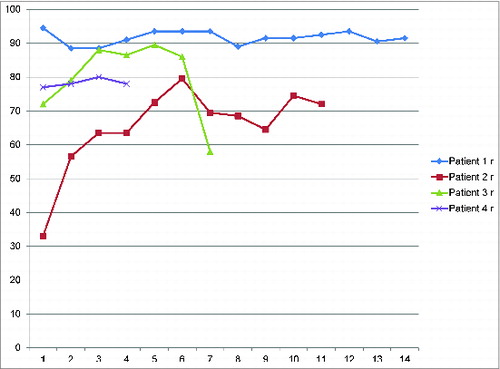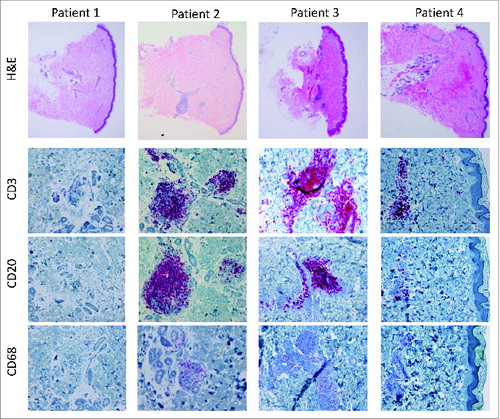Figures & data
Table 1. Patient characteristics at the time of transplantation
Table 2. Rejection episodes
Table 3. Complications and side effects
Figure 2. 3D-reconstructions of CT-angiography and conventional angiography (A–C) patient #1; (D–H) patient #2; (I–K) patient #3; (L and M) patient #4.

Figure 3. Hand Tansplantation Score System (HTSS) The total score for patient #1: 90.5 for the right and 90 for the left hand; for patient #2: 74 for the right and 71.5 for the left forearm; for patient #3: 86 for the right and 85.5 for the left hand; for patient #4: 80 for the right hand. The hand transplantation score system of the international registry includes appearance (15 points), sensibility (20 points), movement (20 points), psychological and social acceptance (15 points), daily activities and work status (15 points), patient satisfaction and general well being (15 points). 0–30 points &Equals; poor, 31–60 points &Equals; fair, 61–80 points &Equals; good, 81–100 points &Equals; excellent.



![Figure 4. Compound Motor Action Potentials (CMAP) Amplitudes of compound motor action potentials recorded from left [▴] and right [♦] m. abductor pollicis brevis, and left [x] and right [▪] m. abductor digiti minimi; abscissa, time after transplantation in years; ordinate, amplitude in mV.](/cms/asset/6781a077-8ec2-44b0-ad5a-32e2dc89a812/kvca_a_973798_f0004_c.jpg)